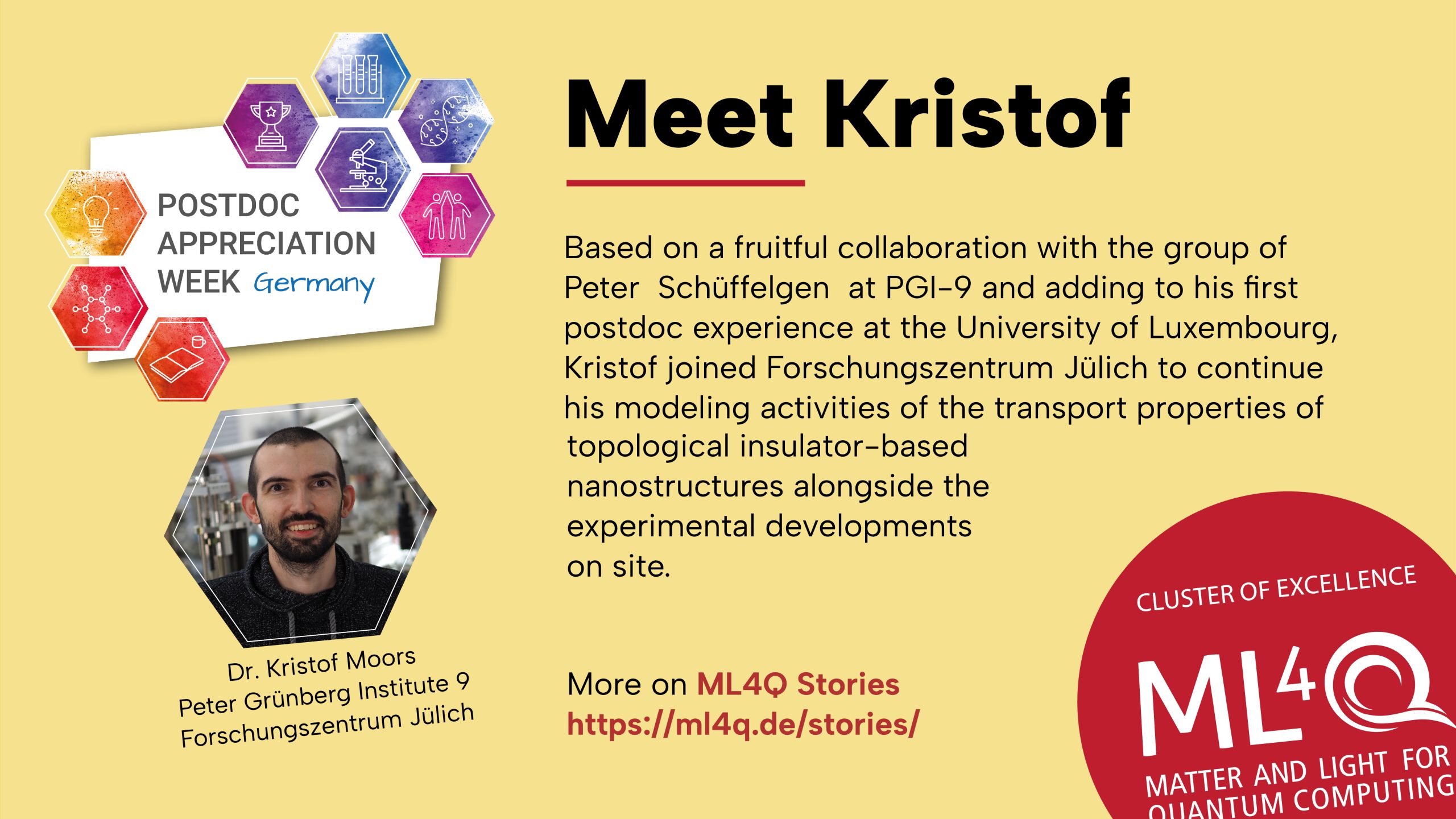It’s Postdoc Appreciation Week!
This week the global scientific community celebrates the Postdoc Appreciation Week (PAW) which was started in 2009 in the US by the National Postdoctoral Association to recognize the significant contributions postdocs and researchers make towards research and academic life in general. The PAW is also widely celebrated in the UK and Ireland and since 2022 also in Germany. The Research and Innovation Services of the Leibniz University of Hannover (LUH) teamed up with the Munich Postdoc Network (particularly Helmholtz Munich and the Max Planck Institute of Biochemistry) to establish this initiative in Germany. This year the PAW Germany coordination team invited researchers and research institutions, postdoc coordinators and research administrators all over Germany to join in creating a special program, events and a social media campaign to honor the incredible work of postdocs!
ML4Q took the chance to feature and recognize the impressive achievements of postdocs who are associated to the cluster. During the week, single postdocs and their profiles will be published on the cluster’s blog ML4Q Stories. Today we invite you to meet Dr. Kristof Moors, postdoc in the Peter Grünberg Institute (PGI) 9 at Forschungszentrum Jülich.
Kristof, how would you describe your career path leading to your current position?
I obtained my PhD at the KU Leuven and semiconductor research center IMEC in Belgium on theoretical modeling of the electronic transport properties of conductors at the nanoscale for their use in future-generation integrated circuits. During my PhD, I got interested in more exotic materials, phenomena and (quantum) applications, and I started a postdoc at the University of Luxembourg in the group of Prof. Thomas Schmidt to expand my research activities in this direction. There, I started collaborating with Peter Schüffelgen of PGI-9 on the transport properties of topological insulator-based nanostructures, for which they developed a new fabrication process. As a result of this fruitful collaboration (bringing together theoretical modeling and experiments on state-of-the-art samples), I got the opportunity to become a postdoc at PGI-9 and continue my modeling activities alongside the experimental developments on site.
What are you currently working on and what other research areas would you like to discover?
Together with my collaborators and two PhD students, I am currently working on improving our understanding of nanoelectronic devices in which topological quantum materials, superconductivity, and magnetism are combined. Such devices are expected to give rise to exotic phenomena that are very promising for quantum technological applications, and we are studying their properties in feasible device layouts under realistic conditions with detailed modeling and simulations. We are currently focusing on devices towards the realization of a topological qubit, but I would also like to discover alternative areas and applications for which these exotic properties could be useful.
Do you have a favorite scientist?
I’m not really into idolizing scientists (or anyone, for that matter) but, having to pick one, I would say Feynman because I find the combination of his scientific achievements and ability to explain things really exceptional.
Name a discovery you wished you were part of!
Any discovery that fundamentally pushed the boundaries of our understanding of physical reality (discovery of other contintents, other galaxies, atoms or subatomic particles, etc.).
What is your most enjoyable thing about being a PostDoc in academia?
The problem solving with a variety of analytical and numerical tools, and doing this in collaboration with colleague researchers and students.
And what is the most tedious thing about being a PostDoc in academia?
Writing grant proposals.
What comes next?
Coffee.
On the somewhat longer term, I would like to build further on top of the research activities that I’m currently doing and start my own independent research group. I am also very much looking forward to seeing some of the properties that we have recently been uncovering with simulations verified in experiment.
